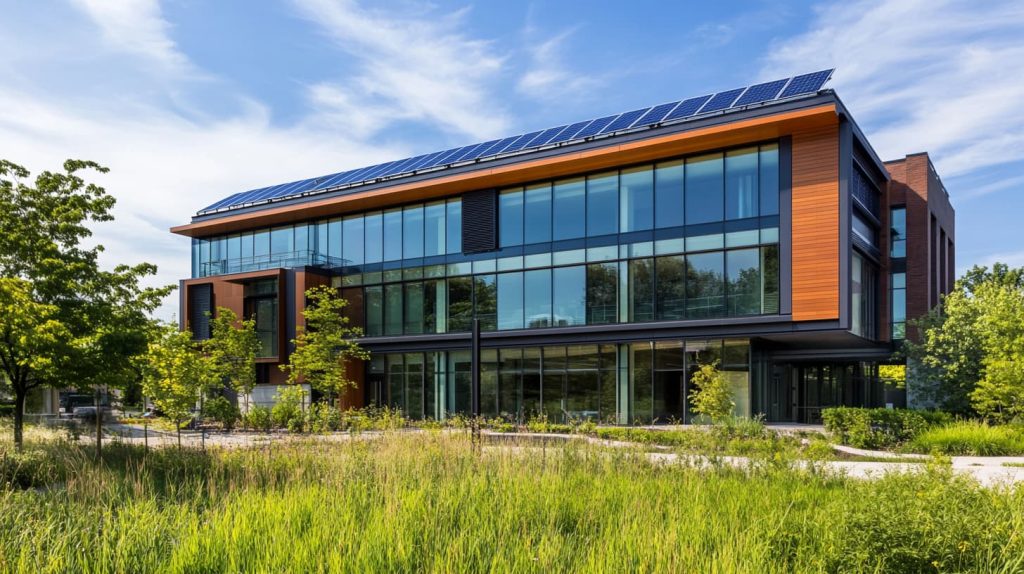The architectural landscape stands at a pivotal crossroads, where environmental responsibility intersects with innovative design. Over the past decades, sustainable architecture has transformed from an idealistic concept into an absolute necessity, driven by climate change, urbanization, and evolving societal values. Today’s architectural practices reflect a profound understanding that buildings account for approximately 40% of global energy consumption and one-third of greenhouse gas emissions.
The journey toward sustainable architecture began as a response to the energy crisis of the 1970s, but it has evolved into a comprehensive approach that encompasses every aspect of building design, construction, and operation. Modern sustainable architecture represents more than just energy efficiency; it embodies a holistic philosophy that considers environmental impact, human wellbeing, and economic viability throughout a building’s entire lifecycle.
Advancing Materials and Construction Technologies
Contemporary sustainable architecture is witnessing an unprecedented revolution in building materials. Cross-laminated timber (CLT) has emerged as a game-changing structural element, offering the strength of traditional materials while sequestering carbon and reducing construction time. This engineered wood product exemplifies how traditional materials can be reimagined for modern sustainability requirements.
Innovative smart glazing technologies are transforming how buildings interact with their environment. Electrochromic glass, which changes its properties in response to environmental conditions, represents a significant leap forward in managing solar gain and occupant comfort. These windows can automatically adjust their tint based on sunlight intensity, time of day, and seasonal variations, optimizing energy usage while maintaining optimal indoor conditions.
Construction Evolution
The construction industry is undergoing a radical transformation through the adoption of advanced manufacturing techniques. Three-dimensional printing of building components has moved beyond experimental stages to become a viable construction method, offering reduced waste, lower labor costs, and unprecedented design freedom. This technology allows for the creation of complex geometric forms that would be impossible or prohibitively expensive using traditional methods.
Integrated Environmental Systems
Modern sustainable buildings are increasingly designed as integrated environmental systems rather than collections of separate components. This systemic approach combines renewable energy generation, smart building management, and natural resource optimization into a cohesive whole. Solar panels are no longer merely additions to rooftops but are integrated into building facades and windows, serving multiple functions while generating clean energy.

Advanced building management systems leverage artificial intelligence to optimize resource usage in real-time. These systems analyze patterns in occupancy, weather conditions, and energy prices to make intelligent decisions about heating, cooling, and lighting. The result is a building that responds dynamically to changing conditions while maintaining optimal comfort and efficiency.
Natural Light and Living Systems
Natural light has become a crucial design element in sustainable architecture, with sophisticated daylighting strategies reducing energy consumption while improving occupant wellbeing. Light wells, solar tubes, and strategically placed windows work in concert with automated shading systems to maximize natural light while preventing glare and excessive heat gain.
Green roofs and living walls have evolved from novelty features to essential components of sustainable building design. These systems provide multiple benefits, including improved insulation, stormwater management, and enhanced biodiversity. In urban environments, they help mitigate the heat island effect while creating valuable green spaces for building occupants.
The Business Case for Sustainability
The economic argument for sustainable architecture has never been stronger. While initial construction costs may be higher, the long-term benefits in terms of reduced operating costs, increased property value, and improved occupant productivity create a compelling business case. Buildings designed with sustainability in mind typically command premium rents and experience lower vacancy rates.
Government incentives, carbon pricing mechanisms, and growing consumer demand for sustainable spaces further strengthen the economic rationale. Forward-thinking developers and property owners increasingly recognize that sustainable design is not just an environmental imperative but a sound business strategy.
Innovation and Adaptation
The future of sustainable architecture lies in its ability to adapt to changing environmental conditions while pushing the boundaries of innovation. Emerging technologies such as biomimetic materials, which emulate natural processes, and self-healing concrete promise to create buildings that are more resilient and require less maintenance.
The integration of digital twins – virtual replicas of physical buildings – allows for unprecedented levels of optimization and predictive maintenance. These digital models enable architects and building managers to simulate different scenarios and make informed decisions about building operations and modifications.
Building a Sustainable Future
The transformation of architectural practice toward sustainability represents one of the most significant shifts in the built environment since the Industrial Revolution. Success in this transformation requires a delicate balance between innovation and practicality, between immediate needs and long-term sustainability goals.
As climate change continues to present unprecedented challenges, the role of sustainable architecture becomes increasingly critical. The buildings we design and construct today will determine not only our environmental impact but also the quality of life for generations to come. The path forward requires continued innovation, collaboration across disciplines, and a commitment to creating buildings that serve both people and planet.
Through thoughtful design, innovative materials, and integrated systems, sustainable architecture is creating a built environment that not only minimizes environmental impact but actively contributes to ecological regeneration. The future of architecture is not just about creating beautiful buildings – it’s about ensuring those buildings play a positive role in the health of our planet and its inhabitants.
